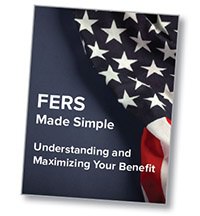Simple Ways to Increase Your TSP Savings
November 24th, 2021 | 4 min. read

Maxing out your Thrift Savings Plan account is not a necessity for federal workers to achieve a comfortable retirement. But there are many good reasons for making it one of your financial goals.
You may want to retire early. Your idea of retirement may be living out some big dreams. You have a severe medical condition that you will need to treat throughout retirement. You simply want the peace of mind that your money will last.
In other words, there isn’t really a reason for not trying to increase your TSP savings.
Many federal workers set aside 5% of their paychecks in their TSP to receive the government match. That’s good, except there’s plenty of room to save more.
The IRS has set the maximum annual contributions for the TSP and other employer-sponsored retirement plans at $20,500 (2022). Anyone who is age 50 or older can save an additional $6,500 in catch-up contributions, for a total of $27,000.
Once retirement starts becoming more of a reality, you may want to sprint to the finish and save as much as you can before it’s too late.
The question is: how? Here are some saving tips that can help you supercharge your TSP savings.
Why increasing your TSP savings is so important
You may be thinking: with income from my FERS basic benefit and Social Security, do I really need to save more in my TSP for retirement?
Probably, simply because how much your TSP savings grow depends on how much you save in the first place. The more you save, the more you can take advantage of compounding. This is the ongoing process of your investment earnings generating their own earnings.
As a simple example, let’s say you earn a salary of $55,000 and save 5% of it each year in your TSP – which is $2,750. That’s without counting the government match on your TSP account. Here’s what you would have after 35 years, assuming a 6.5% annual return:
Saving 5% gets you $341,100. Now let’s say you double that savings amount to 10%, or $5,500 per year. Again, assuming a 6.5% annual return, you would have $682,186 in your TSP over the same 35-year period.
These amounts are nowhere near the maximum annual TSP contributions. Yet, they show you how even a modest increase can make a big difference over time. It’s not just the higher contributions; it is the compounding. The more you save, the more money you have working for your future.
How to increase your TSP savings
But, of course, it’s hard to focus on the future when you have so many demands today. How can you max out your TSP savings when you’re also thinking about the kids’ education, your home, traveling and any other financial goals, too?
Well, one advantage you have during your working years is the flexibility to free up or earn extra money. To free up money entails reducing or cutting costs somewhere else that can then be applied to your savings. Earning extra money is self-explanatory in that you can create another stream of income dedicated to saving more.
What you can do will depend on your personal situation. Not everyone will have the ability or desire to do everything. With that said, here are some ideas for creating newfound funds for your TSP:
Clean out your budget
If you’re truly serious about boosting your retirement savings, look at your budget and start cleaning out the clutter. Reduce or cut unnecessary spending as much as possible. Outside of your needs – food, shelter, transportation, utilities, etc. – all discretionary expenses should be on the chopping block.
Put your retirement first – not college
We all want the best for our children but how much help you provide should be realistic. If you’re fully funding a 529 account but haven’t increased your TSP savings since you started working, then it’s long past due to make a change. There are no scholarships, government grants or personal loans available for retirement. In other words, other long-term financial goals shouldn’t take precedence over your retirement.
Lower your insurance costs
Here’s a little not-so-secret secret: insurance companies will fight for your business. Let them. Every six months or so your policies are up for renewal is a time to shop around for better rates.
Refinance your mortgage
If you haven’t taken advantage yet of low interest rates in the home market, then consider refinancing your mortgage. With a lower rate, you could dramatically lower your monthly payment. Just remember, however, you don’t want to take out cash or extend the term, both of which could negate any savings.
Create a side hustle
In today’s interconnected world, it’s easier than ever to earn a couple of extra dollars, from ride sharing to renting out a room. But the fact is a side gig is not always enjoyable. Instead, you could create a “side hustle” by turning a skill or hobby into an income stream. For example, you could sell homemade crafts or teach lessons online.
Consider working longer if you can
That’s probably not what you want to hear. But, working just a little longer could make a big difference in your retirement income. According to a National Bureau of Economic Research report, a 66-year-old worker who works one year longer and claims Social Security one year later sees a 7.75% rise in inflation-adjusted retirement income.
Whether maxing out your TSP savings is a necessity or a luxury depends on where you are now and where you might be in the future. There are a couple of ways to find out.
You can use online calculators such as the TSP’s Federal Ballpark E$timate®. But the drawbacks of retirement calculators are that they may not provide accurate numbers, can be limited as to what financial assets you can include and, therefore, may provide limited results.
For more comprehensive retirement planning, consider working with a financial adviser. A financial adviser can help you create a retirement plan that includes a variety of estimations based on your FERS benefit, TSP plan and all other assets.
Learn more about government retirement benefits, including the FERS basic benefit, the Thrift Savings Plan and other retirement planning steps, by downloading our free, easy-to-understand guidebook, FERS Made Simple: Understanding and Maximizing Your Benefit. (Click the button below.)
As a financial adviser, Kurt takes a comprehensive approach to help clients work toward their financial goals by providing wealth management tools including retirement planning, investment portfolio advice and tax strategies. He specializes in federal government benefits and is a Chartered Retirement Planning Counselor.


